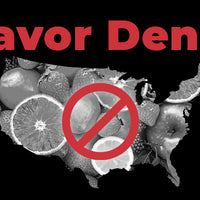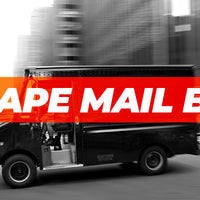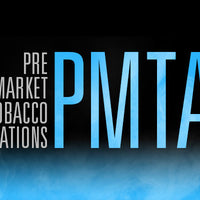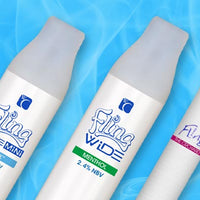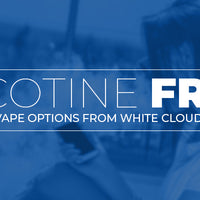When it comes to e-liquids and nicotine, the requirements listed in the FDA’s regulations for vaping products have created a bit of confusion – especially when it comes to nicotine-free e-liquids. The FDA has listed out regulations for both nicotine-containing and nicotine-free e-liquids and has categorized both as tobacco products, even though they do not actually contain tobacco. Yes, nicotine can be derived from tobacco; however, it can also be derived from vegetables, such as potatoes and eggplants, so science would say it’s not actually tobacco, right? Well the FDA has a different idea of what nicotine is and how it should be regulated when it comes to vaping products.
How the FDA Regulates Vaping E-Liquids
Some of the confusing language found among the FDA’s deeming rules for vapor products applies to how e-liquids are regulated. Questions have been raised about how the requirements apply to nicotine-free e-liquids and the use of synthetic nicotine for vaping products. As a result, we received quite a few of these types of questions during our DeMISTified Webinar series. Below you will find these questions with answers from the industry experts.
Are flavoring extracts and other e-liquid ingredients other than nicotine considered tobacco products?
Yes, if you are purchasing flavor extracts, PG (propylene glycol), or VG (vegetable glycerin) at a vape store or electronic cigarette manufacturer, then it is considered a tobacco product. E-liquids ingredients usually include nicotine (unless nicotine-free), flavoring, and a VG/ PG mixture. Flavor extracts, VG and PG are also used in other consumer products such as candy and soaps; therefore, users can purchase these separately.
For example, users can purchase flavor extracts from Bulk Apothecary and they will not be considered tobacco products. However, it still all depends on the intended sale of the product: the intent of sale must be clear that it is not to be used with a tobacco product, including vaping devices,otherwise it will be categorized as a tobacco product. So all of our pre-filled e-cigarette cartridges and bottled e-liquids at White Cloud are now considered tobacco products.
Are there any plans to ban flavored e-liquids?
The current regulations do not ban flavors; however, a flavor ban was included with the original set of regulations that were sent to the White House to be reviewed by the Office of Management and Budget (OMB). As originally submitted to the OMB, the FDA’s rule gave a grace period for flavored products of only 90 days after the rule became effective.
Luckily for vapers and vape companies, the OMB deleted both the FDA’s planned policy and the rationale for the policy, which included pages of data and scientific studies in support of its plan. The FDA noted that the proposed ban was due to a rise in youth and young adult use of flavored tobacco products, including e-cigarettes, along with the theory that vape companies were creating flavors to appeal to children.
The FDA’s proposed flavor ban falls in line with the Tobacco Control Act of 2009, when the organization banned flavored tobacco cigarettes, with the exception of tobacco and menthol. Public health organizations, such as the Campaign for Tobacco-Free Kids, continue with claims that flavored e-liquids target children in order to encourage policy makers to implement a future ban on flavored e-liquids, despite the results of vaping surveys and thousands of testimonials from former smokers stating flavored vaping products contributed to their success in quitting smoking.
Related: CASAA Survey Shows the Importance of Flavored E-Liquids
What are the specific requirements for manufacturers for product labeling?
The packaging and labeling requirements for vapor products include restrictions on advertisements and specific warning statements for product packaging and labeling.
The timeline for these restrictions and requirements are as follows:
- Effective August 8, 2016: No false or misleading advertising for vapor products, as determined by the FDA, is allowed. This means vape companies are not allowed to make any health statements or compare their products to tobacco. For example, vape companies are prohibited from claiming their products are a safer or healthier alternative to tobacco or that their products can be used for tobacco cessation.
- Effective August 8, 2017: All tobacco products must also cease using descriptors such as “light”, “mild” or “low”, along with any other similar phrases.
- Effective May 10, 2018: All packaging for tobacco products must include the following:
- Name and place of business
- Quantity of the contents
- Percentage of domestic and foreign grown tobacco
- The statement: “Sale only allowed in the United States”
All tobacco product packaging must include the label warning: “WARNING: This product contains nicotine. Nicotine is an addictive chemical.” If the product does not contain nicotine, the manufacturer must submit a self-certification statement to the FDA for review. According to the FDA:
“If the tobacco product manufacturer submits a self-certification statement to FDA that the newly-regulated tobacco product does not contain nicotine (and that the manufacturer has data to support this assertion), then an alternate statement must be used on product packages and advertisements.”
If the FDA approves the self-certification statement, then packaging for the product must carry the warning statement: “This product is made from tobacco.” This rule is confusing to many vapers, including us here at White Cloud, because most e-liquids that do not contain nicotine are not extracted from tobacco; therefore, the product is not really made from tobacco. However, as the FDA stands, any product that can be used for human consumption with a deemed tobacco product, such as a vaping device, must meet the requirements set forth by the regulations regardless of whether or not that product contains nicotine.
The warning labels above must follow these rules set forth by the FDA:
- Be displayed in a conspicuous and prominent place on the two principal display panels of the package.
- Comprise at least 30 percent of each of the principal display panels (warning label area).
- Be printed in at least 12-point font size and must occupy the greatest possible proportion of the warning label area set aside for the required text.
- Be printed in conspicuous and legible Helvetica bold or Arial bold type or other similar sans serif fonts and in black text on a white background or white text on a black background in a manner that contrasts by typography, layout, or color, with all other printed material on the package.
- Be capitalized and punctuated as indicated in § 1143.3(a)(1).
- Be centered in the warning area in which the text is required to be printed and positioned such that the text of the required warning statement and the other information on the principal display panels have the same orientation.
As White Cloud continues through the regulation process, our customers will begin to see such changes to our product packaging and labeling, in addition to the packaging changes we have already implemented in renaming our nicotine strengths.
When do retailers have to make sure all products have proper labels?
Effective May 10, 2018, retailers cannot sell, distribute, or import e-cigarettes or other vaping products without the health warning label and packaging requirements listed above.
Will e-liquids without nicotine have to follow the deeming regulations?
Products that do not contain nicotine are not forced to follow the deeming regulations; however, manufacturers are required to submit a self-certification form to be approved by the FDA. The FDA is still finalizing the self-certification process, but has stated it will look something like this:
“The manufacturer has submitted to FDA a confirmation statement certifying to be true and accurate that the product does not contain nicotine (e.g., no nicotine at detectable levels) and that the tobacco product manufacturer has data to support that assertion.”
Products that receive self-certification approval from the FDA will then be required to carry the warning label: “This product is made from tobacco.”
Does this include synthetic nicotine?
Synthetic nicotine is not derived from a tobacco source; therefore, the FDA cannot regulate it at this time. However, it could very easily be pulled into a similar category as other regulated products depending on how it is marketed. For example, it if is marketed to be used for tobacco cessation or for therapeutic purposes, it could be regulated as a prescription drug; but if it is marketed to be used with a tobacco product, such as a vaping device, then it could be regulated as a tobacco product.
While synthetic nicotine may be an option for vaping products, it is not cost-effective, nor have there been studies to prove it does not have harmful effects. However, there are larger manufacturers already looking into targeting the vaping industry with synthetic nicotine, so this may be an available option in the near future.
How do the new e-liquid container laws, not related to the FDA regulations, affect vape shops?
On July 26, 2016, the Children’s Nicotine Poisoning Prevention Act (CNPPA) went into effect. This act requires e-liquid manufacturers to enforce child-resistant packaging for all products and follow the packaging testing guidelines set forth by the Poison Packaging Prevention Act of 1970. Child-resistant packaging is only required for bottled e-liquid. Other vapor products, such as disposable electronic cigarettes, pre-filled cartridges and other sealed vaping products are exempt from the requirements.
FDA Seeks Volunteers for Vaping Manufacturing Facility Visits
The FDA is hoping to send staff to manufacturing facilities involved in the vapor industry, including facilities for e-liquids, components and parts. These site visits are not going to be inspections, but instead will serve to educate the FDA staff about the vapor industry. If you are interested in being a part of these visits, you can apply in the comments section of the Tobacco Product Manufacturing Facilities information page on the Federal Register website.

